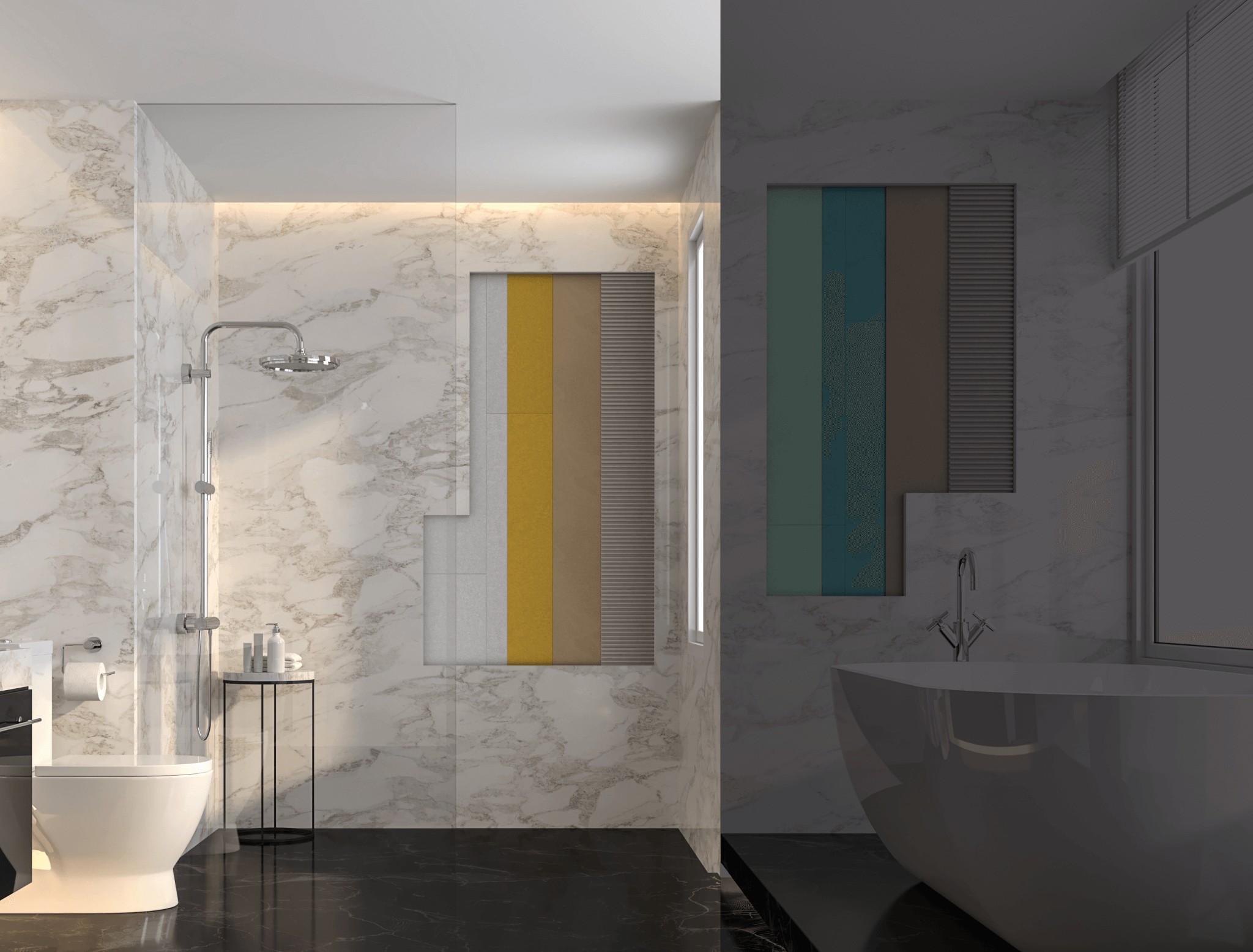
Murexin
Laying of large format slabs on cement fibre panels

- 1 | cement fibre panel
- 2 | SUPER PRIMER D 4 RAPID
- 3 | RAPID PROFESSIONAL SEALING COMPOUND MAXIMO PSM 1K
-
4 |
QUICK ADHESIVE MORTAR FLEX WHITE SFK 81
RAPID FLEX ADHESIVE MORTAR TRASS SFK 85
- 5 |
- 6 |
Large formats are in fashion, and both the range of installation materials and the demand for them are constantly increasing. No tiler will ever avoid the processing of large-format tiles and slabs. In general, large formats can be laid on all standard construction substrates, but with some it is necessary to carry out appropriate preparations that go beyond the usual substrate preparation. An assessment must be made on a case-by-case basis. For safe and permanent bonding of large formats, there are increased requirements for the evenness of the substrate, because, due to their surface area and the relatively small proportion of joints, greater stresses occur, which increase the possible risk of breakage. It is the job of the adhesive mortar to reduce these tensions: the correct substrate preparation and the selection of the right adhesive are prerequisites for a durable surface.
Calcium sulphate screeds must be primed with an epoxy resin primer, which must be fully sanded on the surface. This prevents the ingress of moisture from the bedding mortar into the substrate, which under certain circumstances can lead to the formation of calcium sulphoaluminate crystals and the accompanying detachment of the slab covering!
-) In the case of panels that are fibre-reinforced on the rear, the bedding mortar must be treated with an S2 adhesive emulsion
-) The buttering-floating technique is to be used
-) The use of highly polymer-modified, fast-setting adhesive mortar with crystalline water binding is necessary to prevent saponification
-) Depending on the substrate, e.g. with underfloor heating, decoupling measures may be necessary to reduce the stresses that occur
 SUPER PRIMER D 4 RAPID
SUPER PRIMER D 4 RAPID
 RAPID PROFESSIONAL SEALING COMPOUND MAXIMO PSM 1K
RAPID PROFESSIONAL SEALING COMPOUND MAXIMO PSM 1K
 QUICK ADHESIVE MORTAR FLEX WHITE SFK 81
QUICK ADHESIVE MORTAR FLEX WHITE SFK 81